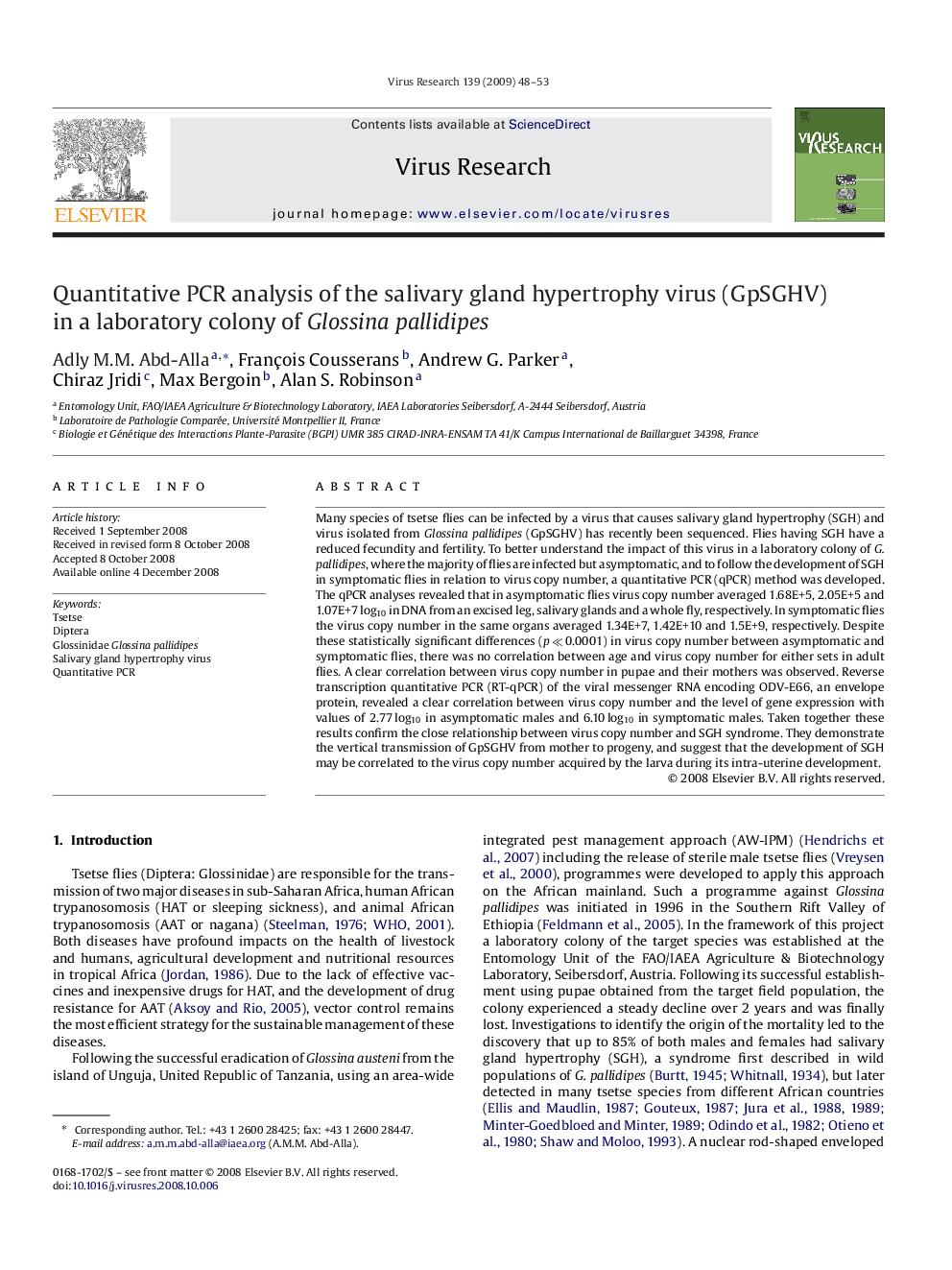| Article ID | Journal | Published Year | Pages | File Type |
|---|---|---|---|---|
| 3430212 | Virus Research | 2009 | 6 Pages |
Many species of tsetse flies can be infected by a virus that causes salivary gland hypertrophy (SGH) and virus isolated from Glossina pallidipes (GpSGHV) has recently been sequenced. Flies having SGH have a reduced fecundity and fertility. To better understand the impact of this virus in a laboratory colony of G. pallidipes, where the majority of flies are infected but asymptomatic, and to follow the development of SGH in symptomatic flies in relation to virus copy number, a quantitative PCR (qPCR) method was developed. The qPCR analyses revealed that in asymptomatic flies virus copy number averaged 1.68E+5, 2.05E+5 and 1.07E+7 log10 in DNA from an excised leg, salivary glands and a whole fly, respectively. In symptomatic flies the virus copy number in the same organs averaged 1.34E+7, 1.42E+10 and 1.5E+9, respectively. Despite these statistically significant differences (p ≪ 0.0001) in virus copy number between asymptomatic and symptomatic flies, there was no correlation between age and virus copy number for either sets in adult flies. A clear correlation between virus copy number in pupae and their mothers was observed. Reverse transcription quantitative PCR (RT-qPCR) of the viral messenger RNA encoding ODV-E66, an envelope protein, revealed a clear correlation between virus copy number and the level of gene expression with values of 2.77 log10 in asymptomatic males and 6.10 log10 in symptomatic males. Taken together these results confirm the close relationship between virus copy number and SGH syndrome. They demonstrate the vertical transmission of GpSGHV from mother to progeny, and suggest that the development of SGH may be correlated to the virus copy number acquired by the larva during its intra-uterine development.
